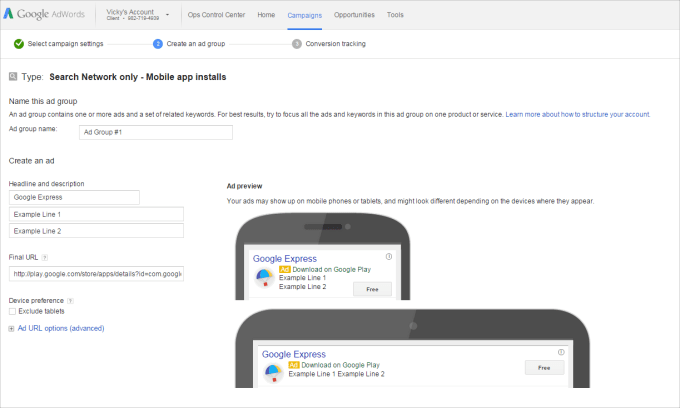
Fortifying the Gates: A Deep Dive into Android’s New Developer Verification System
The New Era of Trust and Security in the Android Ecosystem
The Google Play Store is a sprawling digital metropolis, home to millions of apps that power our daily lives. From productivity tools to immersive games, the sheer scale of the Android ecosystem is a testament to its open nature. However, this openness has historically been a double-edged sword. For every high-quality application, there are countless others that are low-quality, abandoned, or, in the worst cases, malicious. In a significant move to curate this digital landscape, Google is ushering in a new era of developer verification. This isn’t just a minor policy tweak; it’s a fundamental restructuring of how developers gain access to the world’s largest app marketplace. This change promises to enhance security and user trust across all Android Gadgets, but it also introduces new considerations for the vibrant developer community. This article provides a comprehensive technical breakdown of this new verification system, analyzing its structure, its implications for developers of all sizes, and what it means for the future of the Android platform.
Understanding the Shift: What is Tiered Developer Verification?
For years, the process of becoming an Android developer and publishing on the Play Store has been relatively straightforward: a one-time registration fee and some basic account information were all that was required. This low barrier to entry fueled incredible growth but also created vulnerabilities. To address this, Google is implementing a more rigorous, multi-tiered verification system designed to differentiate between various types of developers and provide clearer trust signals to users.
The Rationale: Why Change a System That Fueled Growth?
The primary driver behind this monumental shift is security. Malicious actors have long exploited the ease of creating developer accounts to publish malware, spyware, and phishing apps. By requiring more stringent verification, Google aims to make it significantly harder and more expensive for these bad actors to operate. The goals are multi-faceted:
- Combat Malware: By tying developer accounts to real-world identities and registered businesses, Google can more effectively track and ban malicious developers, preventing them from simply creating new accounts after being removed.
- Improve App Quality: The system implicitly encourages a higher level of commitment. Developers investing in a verified identity are more likely to invest in the quality and long-term maintenance of their applications.
- Increase User Trust: When users see a “Verified” badge or a registered business name on an app listing, it provides an immediate signal of legitimacy. This is crucial for apps that handle sensitive data, such as banking or communication apps, enhancing the safety of all Android Phones.
- Regulatory Alignment: Global regulations, such as the EU’s Digital Markets Act (DMA), are increasingly demanding more accountability from digital gatekeepers. A robust verification system helps Google comply with these evolving legal landscapes.
The Proposed Tiered Structure: Free vs. Paid
The new system is expected to revolve around two main tiers, each catering to a different segment of the developer community. While specific details are still emerging, the conceptual framework is clear.
The Free Tier will likely serve as the entry point for individuals, students, and hobbyists. Verification might involve confirming a personal identity through government-issued ID. This tier would allow new developers to experiment and publish apps without a significant financial barrier, preserving the spirit of Android’s open platform. However, it will likely come with limitations, such as not displaying a verified organization name on the app’s store page or having stricter review processes.
The Paid Tier is designed for businesses, professional studios, and established independent developers. This tier will require more extensive organizational verification, potentially involving business registration documents, D-U-N-S numbers, and other corporate identifiers. In return for this higher level of scrutiny (and a recurring fee), developers in this tier would gain significant benefits, including a prominent “Verified” badge on their Play Store listings, the ability to display their official company name, and potentially gaining access to enhanced analytics, support, and even preferential treatment in app discovery algorithms.
A Deep Dive into the Verification Process and Tiers
The practical implementation of this system will have a direct impact on developer workflows and business strategies. Understanding the nuances of each tier is critical for both new and existing developers to navigate the changing landscape of the Play Store.

The Free Tier: A Gateway for Innovation
The free tier is Google’s solution to keeping the platform accessible. It ensures that a student in their dorm room or a hobbyist with a great idea can still bring their creation to the global stage.
- Who It’s For: Individual developers, students, open-source projects without a formal business entity, and those testing the waters of app development.
- Likely Requirements: Verification of a personal identity using official documentation. This is a step up from the old system but still highly accessible.
- Potential Limitations: The most significant limitation will likely be in how the developer is represented on the Play Store. Instead of a company name, it may only show an individual developer name, which could impact user trust for certain app categories. There might also be caps on the number of apps one can publish or slower review times compared to the paid tier.
The Paid Tier: The Professional Standard
This tier is about establishing commercial legitimacy and is aimed squarely at businesses that rely on the Play Store for revenue and distribution.
- Who It’s For: App development agencies, startups, established software companies, and any business publishing an official app.
- Likely Requirements: This is where the process becomes more rigorous. Developers will likely need to provide official business registration details, a verifiable business address and phone number, and potentially a D-U-N-S number, which is a standard for business identification.
- Key Benefits: The primary benefit is the trust signal. A verified business profile on the Play Store assures users that the app comes from a legitimate, accountable entity. This can directly translate to higher download and conversion rates. Other potential perks could include priority support from Google, access to beta programs, and improved visibility within the Play Store, which is a crucial advantage in a crowded market.
The Privacy Question: Why No Public Developer List?
One of the most interesting pieces of emerging Android News is the decision not to create a public, searchable database of all verified developers. This choice presents a trade-off. On one hand, it protects the privacy of individual and small-scale developers who may not want their personal information to be publicly searchable. This is a valid concern that prevents potential harassment. On the other hand, it limits transparency for security researchers and journalists who use such databases to track networks of malicious apps or identify developers with a history of policy violations. Google is betting that its internal enforcement mechanisms will be robust enough to police the ecosystem without needing this public accountability layer.
Implications Across the Android Ecosystem
This verification system will send ripples through the entire Android world, affecting everyone from solo developers to multinational corporations and, most importantly, the end-users of billions of Android Gadgets.
For Indie Developers and Hobbyists
The free tier is a lifeline, but it also creates a new competitive dynamic. An indie developer’s app, even if technically superior, might be perceived as less trustworthy when placed next to a competitor’s app that boasts a “Verified Business” badge. This could pressure serious indie developers to opt for the paid tier to remain competitive, turning a passion project into a business expense. The key for this group will be to build trust through other means: excellent app quality, transparent privacy policies, and strong user reviews.
Case Study: Imagine two new calculator apps. App A is built by a talented independent developer on the free tier. App B is built by a small LLC on the paid tier. Even if App A has more features, a user concerned about data privacy might choose App B simply because its listing says “Verified Business: MathWiz Inc.” This scenario highlights the new marketing and trust challenges indie developers will face.
For Enterprise and Established Studios

For large businesses, the paid verification tier is a welcome development. It’s a straightforward way to protect their brand identity on the Play Store and differentiate their official apps from potential copycats or fraudulent apps. The annual fee is a negligible business expense for them, and the benefits of enhanced trust and legitimacy far outweigh the cost. This system formalizes what they were already doing: proving they are a legitimate business. It standardizes the process and makes the outcome—user trust—more tangible.
For End-Users and Their Android Devices
This is where the initiative has the most significant potential upside. For the average user, the Play Store can be a minefield. The new verification system acts as a powerful new filter. Seeing a verified checkmark next to a banking app, for example, provides a much-needed layer of reassurance. Over time, this should lead to a safer ecosystem with fewer instances of fraud and data theft originating from malicious apps downloaded from the Play Store. The overall quality of life on Android Phones and tablets stands to improve as the signal-to-noise ratio in the app marketplace gets better.
Best Practices and Navigating the New Landscape
Adapting to this new system requires foresight and preparation. Developers should not wait until the changes are fully enforced to consider their strategy.
Choosing the Right Tier: A Decision Framework
Developers should ask themselves a few key questions to decide which tier is appropriate:

- What is the primary goal of my app? Is it a hobby, a portfolio piece, or a commercial product?
- Does my app handle sensitive user data? If so, the trust signal from a paid verification is almost mandatory.
- What is my brand identity? If you are building a business around your apps, you need the paid tier to represent your brand professionally.
- What is my budget? If you are just starting, the free tier is the logical choice. You can always upgrade later as your app gains traction.
Preparing for Verification
For individuals (Free Tier): Ensure you have a valid, government-issued photo ID ready. Make sure the name on your ID matches the name you intend to use for your developer profile.
For businesses (Paid Tier): Start gathering your documentation now. This includes your official business registration certificate, tax identification number, a verifiable physical address, and a business phone number. If you don’t have a D-U-N-S number, consider applying for one, as it is a global standard for business verification and may be required.
The Long-Term View: A Healthier Ecosystem?
This move brings Android’s Play Store more in line with Apple’s App Store, which has long required a paid developer program membership for all developers. While some will criticize this as another “walled garden” tactic, the argument for a safer, more curated experience is compelling. The biggest risk is whether the free tier will be sufficient to foster the next generation of innovative developers. If its limitations are too restrictive, it could stifle the very creativity that made Android a global powerhouse. Google’s challenge will be to strike the right balance between security and openness.
Conclusion: A Necessary Evolution for a Mature Platform
Google’s introduction of a tiered developer verification system is one of the most significant governance changes in the history of the Play Store. It is a direct response to the platform’s maturation and the growing pains associated with its massive scale. For users, this promises a safer, more trustworthy experience on their Android Gadgets, reducing the risk of encountering malicious software. For developers, it introduces a new set of strategic choices. The paid tier offers a clear path to establishing legitimacy for businesses, while the free tier aims to keep the door open for new talent. While this shift adds complexity and potential costs, it is a necessary evolution to fortify the ecosystem’s gates, ensuring that the Android platform can continue to thrive safely and securely for years to come.



